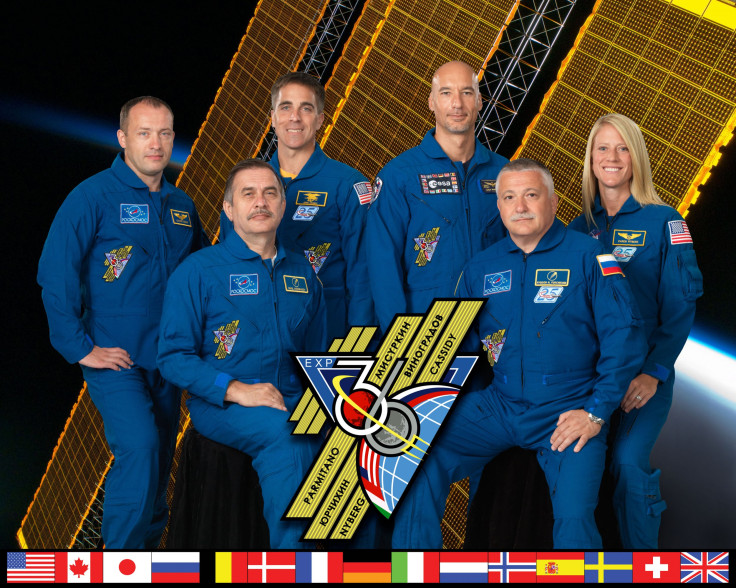New ISS Crew Blasts Off Tuesday, Will Keep Busy With Experiments And Spacewalks

The new International Space Station crew is ready to blast off soon and join their colleagues in orbit.
At around 4:30 pm EST on Tuesday, Russian cosmonaut Fyodor Yurchikhin, NASA astronaut Karen Nyberg and European Space Agency astronaut Luca Parmitano are scheduled to launch from Kazakhstan, and are slated to dock with the ISS about six hours later. The team is a mixture of experience and innocence: This mission will be the second trip to the ISS for Nyberg, a Minnesota-born mechanical engineer; the first for Parmitano, an Italian Air Force veteran; and the fourth trip to the station for Yurchikhin, who holds a degree in economics along with one in mechanical engineering.
The new trio will join Russian cosmonauts Pavel Vinogradov and Alexander Misurkin, and NASA astronaut Chris Cassidy, who have been aboard the station since late March.
Interest in life aboard the ISS has resurged in recent months, thanks largely to the gregarious Canadian astronaut Chris Hadfield, who spoke to the world through a stream of videos, Tweets, and pictures. Hadfield, however, recently came back to Earth, and a new cadre of astronauts must take his place.
When they’re not making covers of David Bowie songs, ISS astronauts perform a lot of science experiments. Recently, the ISS crew worked on a Japanese space agency-designed experiment that involves growing protein crystals in the station’s low-gravity environment, which could be helpful in making new kinds of medicines. They’re also growing seedlings to evaluate how astronauts might possibly grow plants for food on long-term space missions, and seeing how various kinds of materials burn in microgravity -- which could help improve firefighting both in space and on Earth.
Research out in space often has benefits on the ground. For instance, experiments conducted aboard the ISS in 2002 have helped doctors develop next-generation cancer treatments. The microgravity environment aboard the space station was ideal for looking at the mechanical forces behind the tiny bubbles used in “microencapsulation,” which packages drugs into little microscopic balloons that can deliver drugs directly to tumors.
Once the new ISS crew members come aboard, they will have quite a busy schedule. Cosmonauts Yurchikhin and Misurkin are scheduled to go out on a spacewalk to make repairs to modules on a Russian segment of the ISS. Two other spacewalks are planned for July, in which NASA astronaut Cassidy and ESA astronaut Parmitano will be rerouting power cables and making adjustments to prepare for the arrival of a Russian-made laboratory module later in 2013.
There are more than 100 scientific experiments running during the current expedition, from the testing of a Panasonic 3D camcorder to a study of headaches in space and Space Pup, an experiment that looks at how space radiation affects freeze-dried mouse sperm (one of the first steps to understanding whether or not mammals, including humans, can reproduce safely in space).
© Copyright IBTimes 2024. All rights reserved.





















